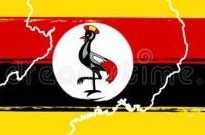What Is Concrete Blocks?
Spread the cement over the sand and add aggregates. Use a shovel to mix the sand and cement until a uniform colour is achieved. Sprinkle water over the surface of the mixture. Continue to mix until the correct consistency of concrete is reached.
The Process Of Mixture For Concrete Blocks
The standard mix for Concrete Blocks is 1:3:5, 1 part cement to 3 parts sand & 5 parts stone aggregate, by volume. 1 part cement to 8 parts mixed aggregate is much the same thing. Note that the ratio is different by weight, since the ingredients don’t have the same density. Many other mixes are also possible.
Types of Concrete Blocks or Concrete Masonry
- Concrete Stretcher Blocks.
- Concrete Corner Blocks.
- Concrete Pillar Blocks.
- Jamb Concrete Blocks.
- Partition Concrete Block.
- Lintel Blocks.
- Frogged Brick Blocks.
- Hollow Concrete Blocks.
- Solid Concrete Blocks. Fully solid concrete blocks look like gray bricks but are typically larger.
- Stretcher Block.
- Pillar Block.
- Lintel Block.
- Jamb Block.
- Column Block.
- Corner Block.
Prices Of Concrete Block In Uganda
Burnt bricks are considerably cheaper, with a piece costing between USh300 to USh500, or more. This is in comparison to concrete blocks that cost between USh 2,000 to USh2,500 each.
| Material type | Cost per square foot USh | Cost per linear foot USh |
|---|---|---|
| Modular interlocking | 53241.32 – 124229.74 | 159723.95 – 745378.41 |
| Large concrete blocks (2′ to 6′ wide) | 70988.42 – 159723.95 | 212965.26 – 958343.67 |
| Concrete cinder blocks (CMU) | 70988.42 – 124229.74 | 212965.26–958343.67 |
| Precast-concrete panels | 88735.53 – 141976.84 | 266206.58 – 851861.04 |
How Many Bags Of Cement Does It Take To Make 100 Blocks?
the number of bags of cement (40 kgs.) needed to lay 100 blocks is between 4 to 6 depending on the size of your blocks.
Do Concrete Blocks Absorb Water?
Because concrete blocks are porous, they will absorb large amounts of water if they are located beneath the soil line. Water enters the soil and penetrates the block pores, finally settling on the interior of the block wall.
How Many Blocks Will One Bag Of 50Kg Cement Make?
Also for the cement blocks construction the team suggests to use 1 bag of cement (50kg) to make 32 blocks 15x20x40cm.
Is A Concrete Block House Good?
Concrete block houses are energy-efficient, fire-resistant, noise-reducing, pest-resistant, low-maintenance, and healthy. Concrete homes are also a good investment.
How Do You Waterproof Concrete Blocks?
- Apply a Coating Directly On the Bare Wall.
- Use a Breathable / Permeable Barrier.
- Use a Weather-Resistant Elastomeric Layer.
- Use “The Pink Stuff.
- Repair Cracks and Fill Voids First.
- Install an Air and Moisture Barrier.
What Type Of Concrete Is Used For Walls?
Usually, plain concrete is used for constructing pavements, footpaths and buildings in areas that do not require high tensile strength. High-strength Concrete – High-strength concrete is prepared by decreasing the water-cement ratio to less than 0.35.
How Many Bricks Needed For 50Kg Bag Of Cement?
The weight of a bag of cement is 50kg, and a 390x190x190mm hollow brick weighs about 14kg. The cement content is about 8%, about 1.12kg. 50 ÷ 1.12 = 44 pieces, a bag of cement can make 44 hollow bricks.
How Long Will A Concrete Block Last?
You can expect a concrete block (CMU) wall to last for the life of the home, 100+ years.
What Is The Disadvantages Of Concrete Block?
Disadvantages of Concrete Blocks
If the required raw materials are not readily available then this becomes an expensive proposition. For fast & steady production of Concrete Blocks, labour needs to be experienced & skilled.
